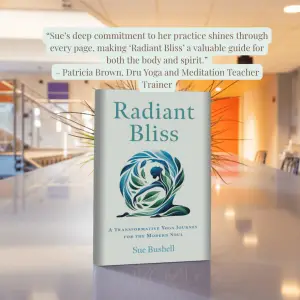Reflecting on Elizabeth Gilbert’s Eat, Pray, Love
Is there anyone who hasn’t heard of Elizabeth Gilbert’s Eat, Pray, Love? I whiled away a summer afternoon, finally cracking open the cover, partly due to the gentle nudging of friends—and the inevitable comparisons that came my way after spending a year in India. "Oh, you would love this book!" they chirped, each with a slight conspiratorial grin, as if they were exchanging a sacred secret. So, I dove in, half-excited, half-skeptical, ready to see what all the fuss was about.
From the outset, Gilbert’s story is undeniably appealing. She embarks on a yearlong journey through Italy, India, and Bali, seeking pleasure, spirituality, and ultimately, balance. The structure of the book—three distinct sections, each dedicated to a theme—was a brilliant touch. It creates a rhythm that guides you through her encounters and revelations. However, as I hit the "Eat" segment, a voice in my head started saying, “Enough with the humor already!” By the end of the Italian extravaganza, while I appreciated her zest for life, I found myself craving a more profound depth.
Yet, in her exploration of India, I experienced an unexpected shift. Gilbert’s India felt like Disneyland—familiar, yet removed. After all, she spent an extended time at an ashram, embracing a journey of self-discovery behind a protective veil. To borrow an analogy from my own experience, attending such an ashram is akin to stepping into a serene bubble where the chaos of the outside world is muted. I could relate to the allure of it. My own time spent in places like the Deer Park Institute had provided not only shelter but also a unique community experience, albeit curated and sheltered from the true essence of India.
Reading Gilbert’s candid reflections on spirituality made me chuckle at her stark contrasts, such as her realization that the spiritual quest is not without its hiccups. The line about “orgies with trees” still lingers in my mind, a playful reminder of the sometimes absurd nature of spiritual seeking. But I do wish she had delved deeper into the vibrancy and challenges of Indian culture, beyond her privileged lens.
While I found resonance with her reflections, it’s clear Eat, Pray, Love may polarize readers. Some friends of mine finished the Indian section, reflecting it was "long" and "boring," yet it became the highlight for me. It revealed Gilbert’s inner turmoil in an authentic way, illustrating how transformative even a sheltered experience can be.
In truth, I can’t wholeheartedly recommend this book unless you’re intrigued by the lens through which a privileged white woman navigates self-discovery with a book advance in hand. It offers the prettiest bubbles, a delightful but perhaps superficial indulgence. It’s an enjoyable read, undoubtedly, but not a religious text or a life-altering blueprint.
So, would I suggest someone read it? If you’re searching for a light escape or glimpses into Indian new-age beliefs without needing a true cultural deep dive, then perhaps this book is for you. As for me, when someone brings up Eat, Pray, Love after I mention my experiences in India, my smile will widen, and I’ll say, “Did you enjoy it? Just wait until mine comes out.”






